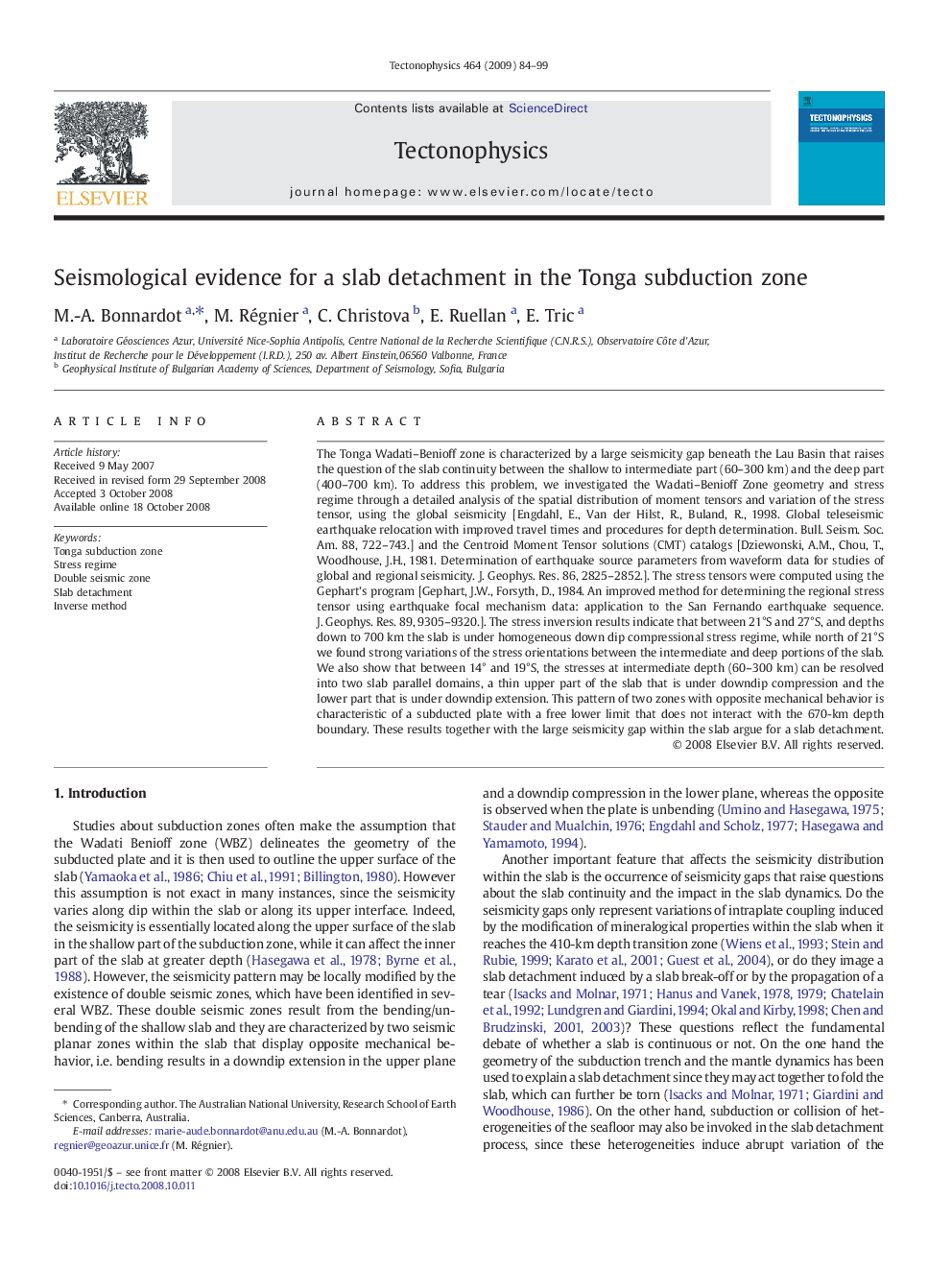| کد مقاله | کد نشریه | سال انتشار | مقاله انگلیسی | نسخه تمام متن |
|---|---|---|---|---|
| 4694229 | 1636901 | 2009 | 16 صفحه PDF | دانلود رایگان |

The Tonga Wadati–Benioff zone is characterized by a large seismicity gap beneath the Lau Basin that raises the question of the slab continuity between the shallow to intermediate part (60–300 km) and the deep part (400–700 km). To address this problem, we investigated the Wadati–Benioff Zone geometry and stress regime through a detailed analysis of the spatial distribution of moment tensors and variation of the stress tensor, using the global seismicity [Engdahl, E., Van der Hilst, R., Buland, R., 1998. Global teleseismic earthquake relocation with improved travel times and procedures for depth determination. Bull. Seism. Soc. Am. 88, 722–743.] and the Centroid Moment Tensor solutions (CMT) catalogs [Dziewonski, A.M., Chou, T., Woodhouse, J.H., 1981. Determination of earthquake source parameters from waveform data for studies of global and regional seismicity. J. Geophys. Res. 86, 2825–2852.]. The stress tensors were computed using the Gephart's program [Gephart, J.W., Forsyth, D., 1984. An improved method for determining the regional stress tensor using earthquake focal mechanism data: application to the San Fernando earthquake sequence. J. Geophys. Res. 89, 9305–9320.]. The stress inversion results indicate that between 21°S and 27°S, and depths down to 700 km the slab is under homogeneous down dip compressional stress regime, while north of 21°S we found strong variations of the stress orientations between the intermediate and deep portions of the slab. We also show that between 14° and 19°S, the stresses at intermediate depth (60–300 km) can be resolved into two slab parallel domains, a thin upper part of the slab that is under downdip compression and the lower part that is under downdip extension. This pattern of two zones with opposite mechanical behavior is characteristic of a subducted plate with a free lower limit that does not interact with the 670-km depth boundary. These results together with the large seismicity gap within the slab argue for a slab detachment.
Journal: Tectonophysics - Volume 464, Issues 1–4, 20 January 2009, Pages 84–99